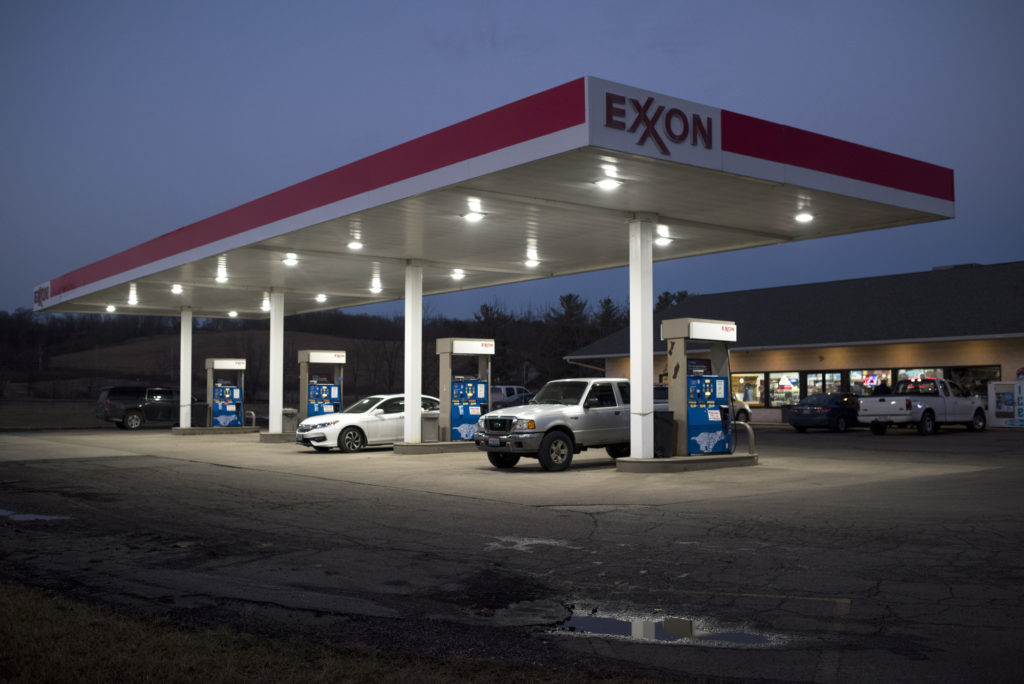
Exxon Mobil and Chevron, usually trendsetters in the oil industry, are woefully off the pace.
After failing to fully benefit from the crude price rally and refining boom that swelled profits for niche competitors like ConocoPhillips and Valero Energy Corp., the biggest U.S. oil explorers missed Wall Street’s profit and production estimates, spurring a stock selloff as wary investors hit the lifeboats.
Exxon fell 15 cents short of fourth-quarter earnings estimates by analysts, while Chevron was 55 cents shy. Analysts were especially critical of the companies’ fuel-making divisions, which presented lower-than-anticipated results despite fat gasoline and diesel margins around the world. Production from Exxon’s and Chevron’s oil wells also fell short of forecasts, limiting the drillers’ capacity to capture resurgent crude prices.
“One word: disappointing,” is how Brian Youngberg, a St. Louis-based analyst at Edward Jones & co., described the results. “Chevron was close on production but Exxon was a significant miss,” he said. “The company continues to be challenged on that side.”
Exxon plunged 5.3 percent to $84.31 in New York trading at 9:58 a.m. after earlier dipping to $83.87 for the biggest intraday drop since January 2016. Exxon was one of the worst-performing blue chip stock on Friday. Chevron dropped 3.1 percent for its steepest intraday decline since October.
Exxon and Chevron stood in sharp contrast to ConocoPhillips, which wowed investors on Thursday by lifting dividends and share repurchases on the back of a penny beat on profit estimates. Royal Dutch Shell Plc, whose market valuation places it squarely between the U.S. drilling giants, also was flogged by investors when its own results on Thursday showed a weaker-than-expected outcome from the Anglo-Dutch company’s fleet of refineries.
While Exxon has long held that choosing to produce lower-cost oil is more important than the volume of output, the latter remains a key metric for investors, according to Cowen & Co. Exxon said it has no plans to resume a share buyback program to return capital to shareholders.
Meanwhile, Chevron’s production of oil and gas equated to 2.74 million barrels, less than the 2.802 million analysts expected. The company, though, said it found enough untapped fields to replace 155 percent of the crude and gas it pumped last year, the highest reserves replacement since 2011.
Exxon’s per-share net income, excluding a one-time gain from U.S. tax code changes, was 88 cents, well short of the $1.03 average of 20 estimates from analysts in a Bloomberg survey. Chevron’s per-share earnings, excluding one-time items, amounted to 67 cents, far below the $1.22 average of 19 estimates from analysts in a Bloomberg survey.
Future plans
The fourth-quarter results hit as both Exxon Chief Executive Officer Darren Woods and Chevron’s CEO Mike Wirth, who stepped into the role on Thursday after being named CEO-in-waiting in September, are gearing up for significant production growth over the next three years.
In Chevron’s case, the company this year is expected to start reaping the rewards after years of investment into expensive mega projects from Australia to Kazakhstan. Exxon’s Woods, meanwhile, last week said that company has signed off on $10 billion of acquisitions in the U.S., Brazil and Mozambique, and is forging ahead with a major exploration venture in Guyana, off the coast of South America.
Recommended for you
